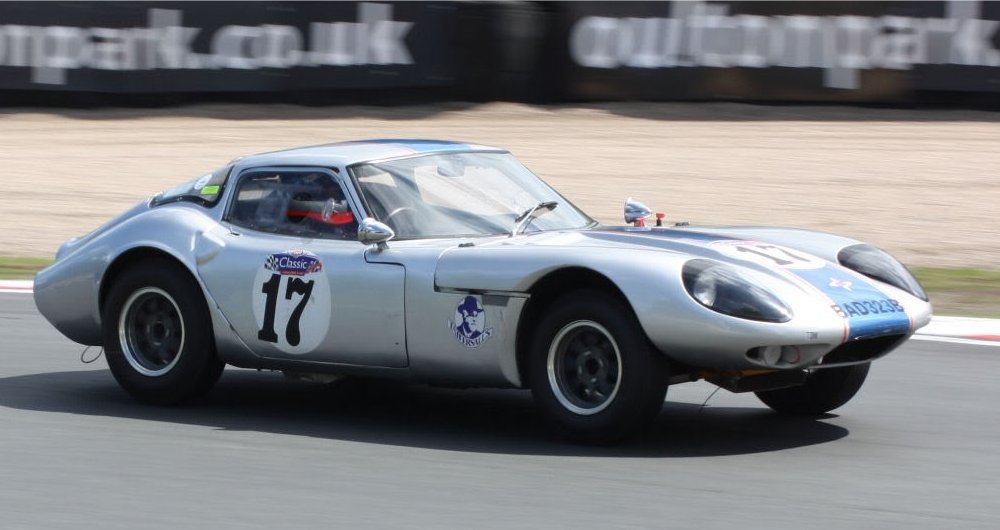Description
The Marcos GT 1800 Coupé, introduced in the mid-1960s, was one of the defining early models that established Marcos as a serious British sports-car manufacturer. Compact, lightweight and instantly recognisable, the GT 1800 Coupé brought together Jem Marsh’s unconventional engineering philosophy and Frank Costin’s aerodynamic expertise to create a car that stood apart from anything produced by mainstream makers. With its distinctive long-nose profile, low seating position and remarkable plywood monocoque construction, the GT 1800 became a cult favourite among enthusiasts who valued individuality, sharp handling and mechanical honesty.
The Coupé used the classic Marcos recipe: a sleek, glassfibre body mounted over a unique wooden monocoque chassis. Instead of traditional steel tubing, the chassis was formed from marine-grade laminated plywood bonded into a torsionally stiff shell. This innovative structure was exceptionally light, surprisingly strong and far more resistant to fatigue than many period critics expected. It offered superb rigidity, giving the GT 1800 Coupé handling precision that rivalled, and often exceeded, cars with far more complex engineering. Its compact dimensions and low centre of gravity were instrumental in its agile, communicative feel.
Power was provided by the reliable and highly tunable 1.8-litre Volvo B18 engine. Producing around 90–100 horsepower in standard form — and significantly more when fitted with twin carburettors and common period performance upgrades — the B18 gave the Coupé lively performance. The GT 1800’s kerb weight stayed close to 750 kg, so the car felt brisk and responsive, with strong mid-range flexibility and a characterful engine note. Depending on tune and gearing, top speeds of 110–120 mph were achievable, placing it firmly within the realm of contemporary British performance rivals like the MGB GT and Triumph GT6, but with a more focused, motorsport-influenced personality.
The suspension setup demonstrated pragmatic engineering aimed at maximizing handling feel. Independent front suspension with wishbones and coil springs provided accurate steering response, while the rear used a live axle with well-controlled damping. Though less exotic than the exotic layouts appearing elsewhere in the 1960s, the setup was effective and dependable. Disc brakes at the front and drums at the rear delivered solid stopping power, and the car’s low stance and rigid chassis meant it carried surprising speed through corners.
Inside, the GT 1800 Coupé was minimalist and purposeful. The cabin was narrow, with a low seating position that placed occupants close to the road for excellent feedback. The dashboard was typically finished in wood veneer and carried simple Smiths instrumentation, with controls arranged in a straightforward manner. Comfort and practicality were secondary concerns — there was limited ventilation, modest luggage space and minimal noise insulation — but for drivers who valued connection and control above conveniences, it was an ideal environment.
On the road, the Marcos GT 1800 Coupé offered an engaging and distinctive driving experience. Its steering was light, direct and communicative, while the car’s low mass made it quick to accelerate and eager to change direction. Road testers of the time praised its stability at speed and the surprising refinement of the wooden monocoque, which resisted flex and vibration better than many expected. The combination of compact size, sharp handling and a lively power unit gave the car real character, especially on winding country roads where its agility could be fully exploited.
The model also enjoyed a successful motorsport presence. The Coupé was campaigned in club racing, hill climbs and endurance events, where its low weight and stiff chassis allowed it to compete effectively against more powerful machinery. Many examples were modified for competition with tuned Volvo engines, revised suspension geometry and lighter bodywork. The car’s racing pedigree helped cement Marcos’s reputation among drivers seeking something different from mainstream sports cars.
As with most Marcos models of the era, the GT 1800 Coupé was produced in small numbers. Its charm lies not only in its rarity but in its individuality: a car built with unconventional methods, smart engineering choices and an unwavering focus on lightness and driver engagement.
Today, the Marcos GT 1800 Coupé is cherished as a characterful and rewarding classic. Its wooden chassis construction remains one of the most intriguing engineering stories in British motoring history, and its combination of lightweight agility, distinctive styling and Volvo-powered reliability make it a standout choice for enthusiasts seeking a unique, enjoyable 1960s sports car.
